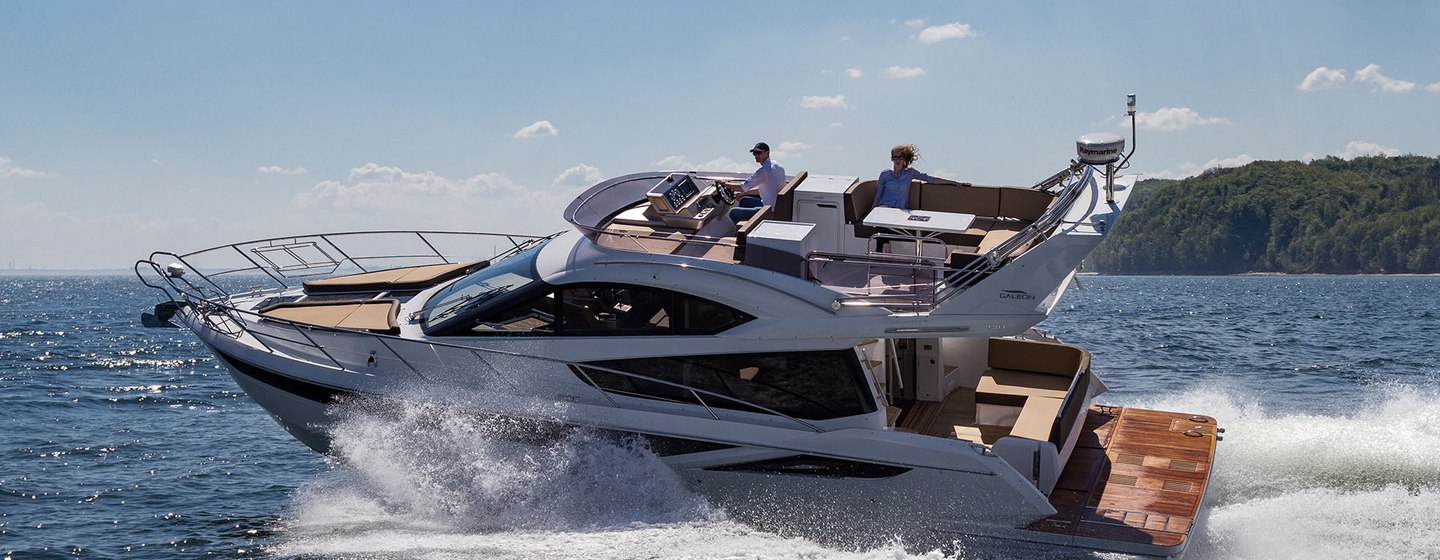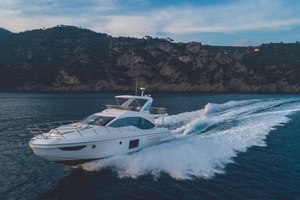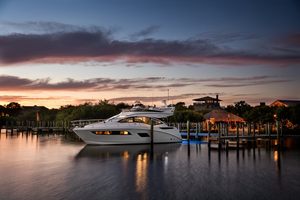In its simplest form, a flybridge is a raised deck level that sits above a wheelhouse or salon, with a helm position from which to pilot the yacht. The modern flybridge yacht, however, is so much more than just an extra deck.
Typical Features
Adding an extra deck to create an entirely new area to use and enjoy over a traditional wheelhouse design was a very early motor yacht development. Borrowed from North American fishing boat design, the first leisure flybridge yachts predate the glass fiber revolution of the 1960s.
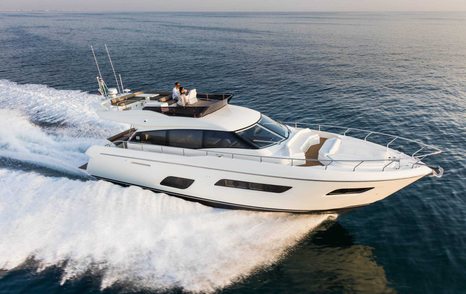
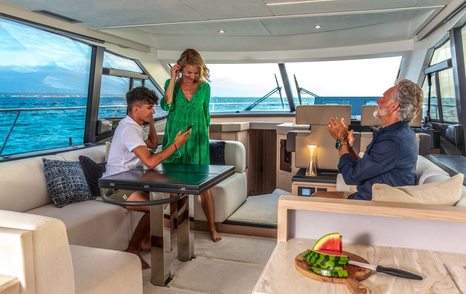

With a modest increase in air draft as the only price to pay, flybridge yachts are designed for fast coastal cruising. What started as little more than a seat and a steering wheel has now developed into vessels with luxurious and spacious upper decks full of style and sophistication.
- 25-30 knot performance
- Increased air draft
- Below deck accommodation
- Aft cockpit
- Deck salon
- Space for guest seating
- Raised deck with steering position
Design Notes
Raised Steering Position
Flybridge design may have evolved massively over the years, but the raised steering position is still the key facet of a flybridge yacht’s design. The elevated position creates excellent visibility and can be utilized for navigation purposes or to maneuver the yacht at close quarters.
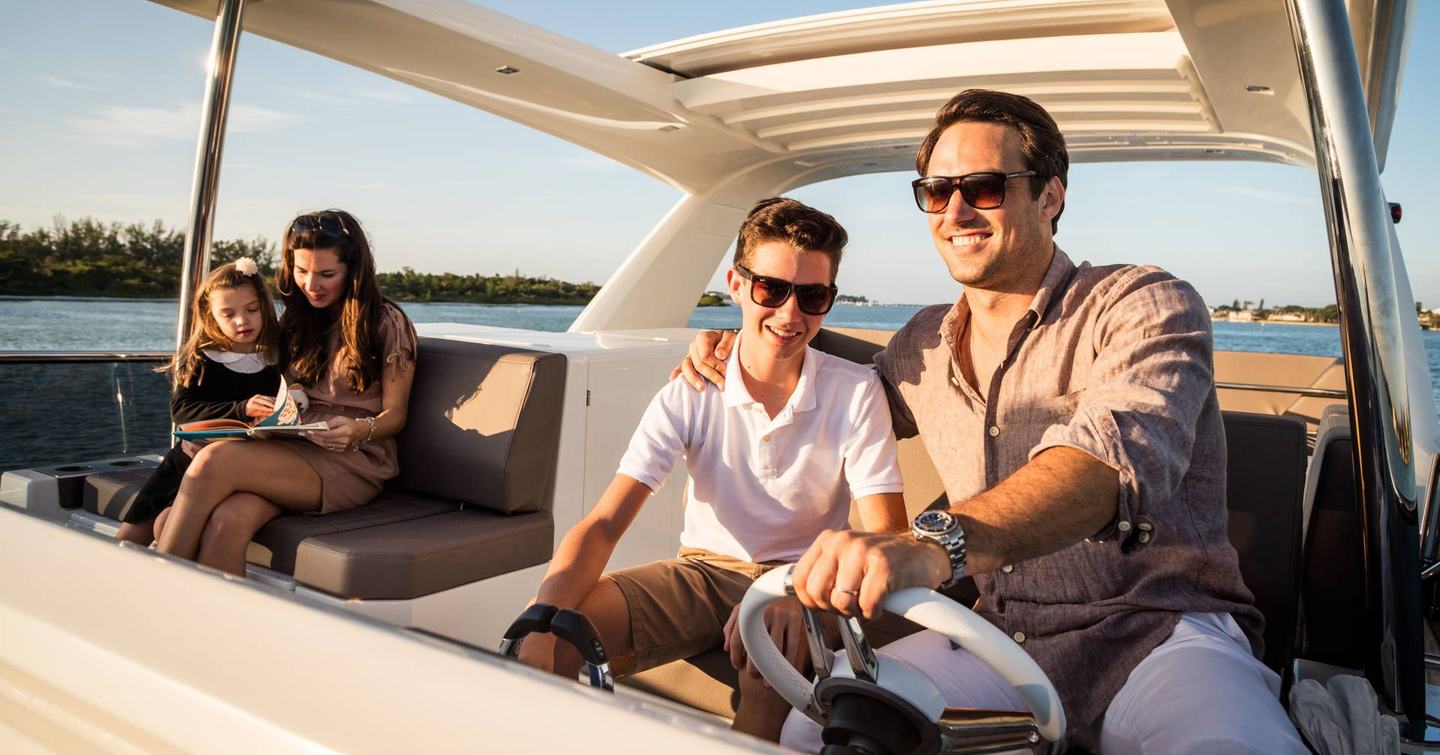
Sheltered Salon
The design retains a sheltered salon beneath the flybridge and below-deck sleeping cabins. This multi-level, multi-area design is perfect for cruising and relaxing in peace. Additionally, the deck salon often has a separate helm position.
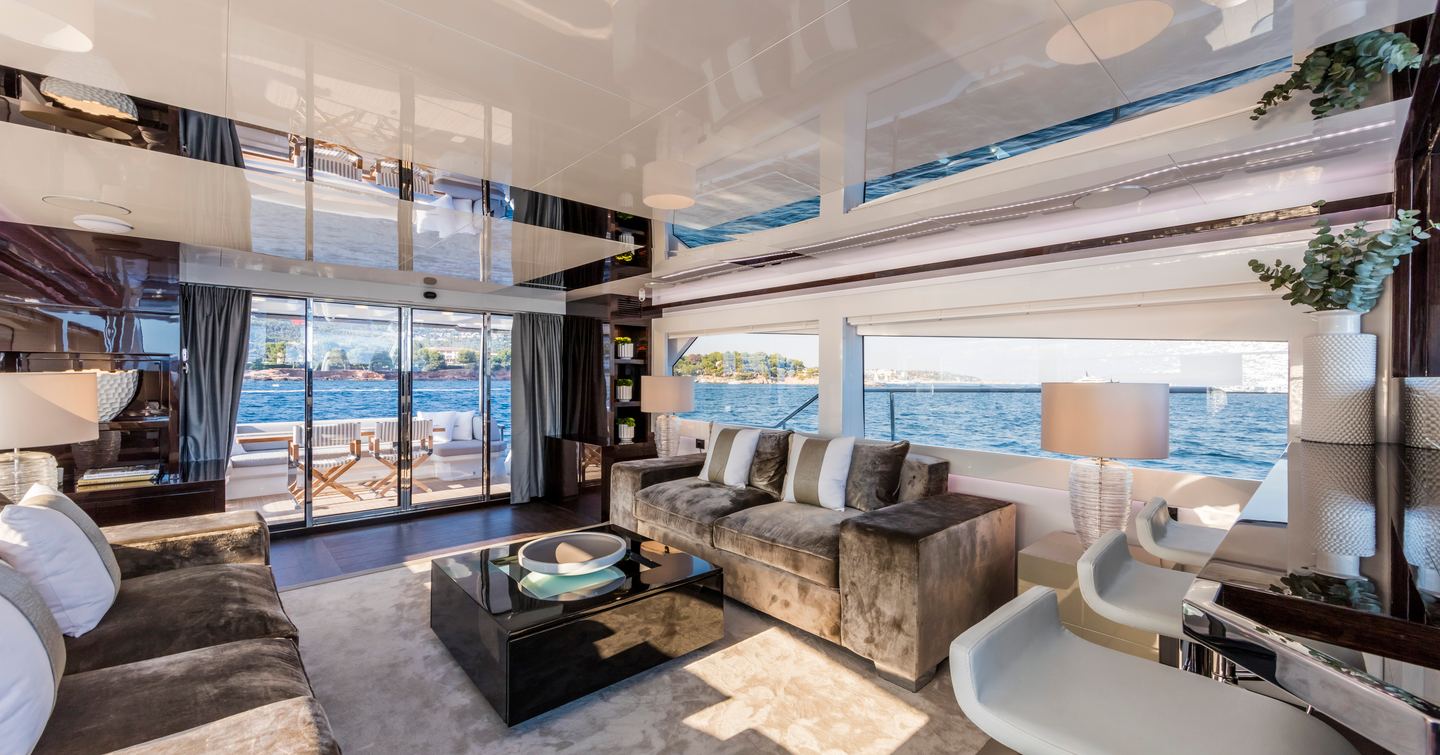
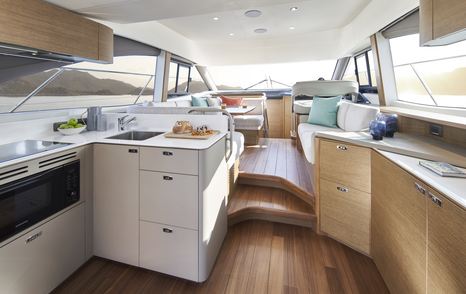

Aft Cockpit and Flybridge Access
Another trait of the flybridge design is the aft cockpit, a deep, protected deck separated from the salon via glass doors and acting as the entry point for the flybridge itself.
The salon and cockpit design make a flybridge yacht perfect for those with young families, offering a safe, spacious, and stylish place to hang out day or night, in all weathers, and, importantly, on one level.
The cockpit also gives access to the bathing platform and acts as a working area to handle the stern mooring lines. Both procedures should be easy to carry out, so make sure your flybridge yacht is suitably designed.
Steps and Ladders
Another integral part of the cockpit is providing safe access to the flybridge itself. Today’s flybridge models tend to favor molded-in steps that offer shallow steps for an easy ascent, and the benefit of built-in stowage within the molded section.
Alternatively, a ladder can be used. This creates more space physically and visually in the cockpit below but does tend to present a steeper, more labor-intensive climb up. Larger yachts, however, sometimes offer internal access to the flybridge.
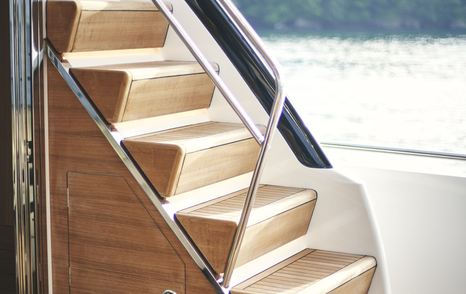
Fairweather or All-weather?
Being completely exposed to the elements, the flybridge is often regarded as a fair-weather deck, best enjoyed in warmer climates. While that is true, the design is hugely popular in colder cruising grounds, with owners often selecting to stay up top even in poor weather. As the adage goes, there is no such thing as bad weather, only the wrong clothes, so just add proper waterproof clothing to your cruising inventory and carry on.
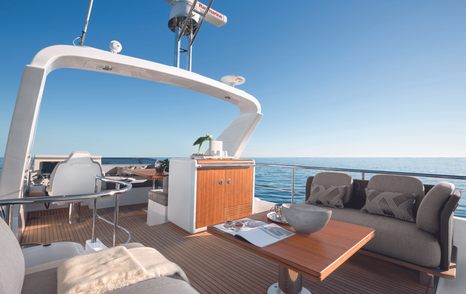
Layouts: GAs
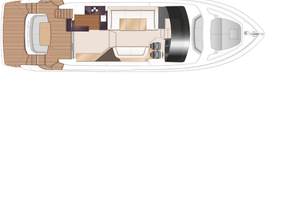
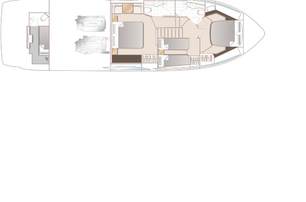
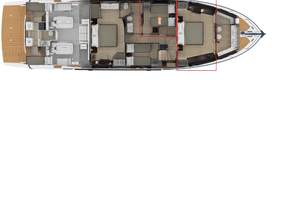
Although flybridge yachts run from 10m (33ft) to 30m (98ft), a vast size range in terms of onboard space, they follow fairly straightforward layout concepts.
The salon sits at deck level, in the center of the yacht, there is a cockpit aft (over 15m/49ft) forward, with the cabins below decks. The main difference is how the cabins are laid out.
Master Cabin
For the 12m (39ft) plus market, the master suite will usually be found amidships on new yachts, enjoying a full beam position. On older yachts, under 15m (49ft), the master cabin may lie forward, in the bows.
On yachts of around 20m (66ft) or more, the master cabin can move up to the main deck, lying forward. This creates a separate entrance away from the other guest cabins, while its elevated position provides impressive views.
Other than that, the guest cabin numbers will vary according to size and design but will almost always lie below decks.
Galley Position
The last and most notable difference is where the galley resides. On older yachts it can often be found below deck, more recently it has moved up to deck level, either aft, near the cockpit, or more towards the center of the yacht. It makes more sense to have the galley up, where it can ventilate more easily, and so having it aft, near the cockpit doors, makes additional sense.
Flybridge Yacht Sizes
The sweet spot for modern flybridge design is approximately 12m (40ft) to 18m (60ft), at the heart of the luxury, owner-operated cruising sector. However, flybridge yachts can start at approximately 10m (33ft) and run up to 25m (82ft) and beyond — although above this level the vessel may be referred to as a motor yacht or perhaps even a superyacht.
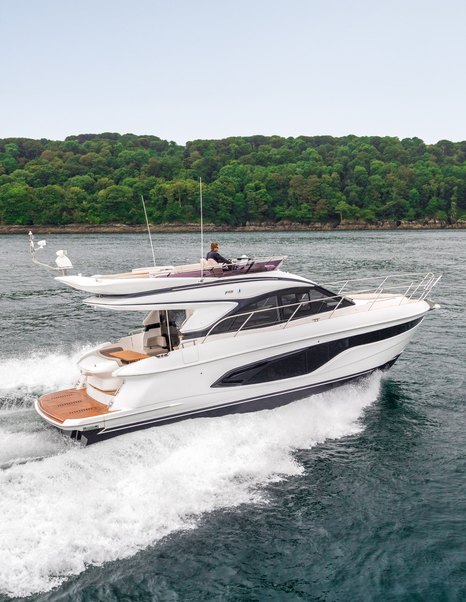
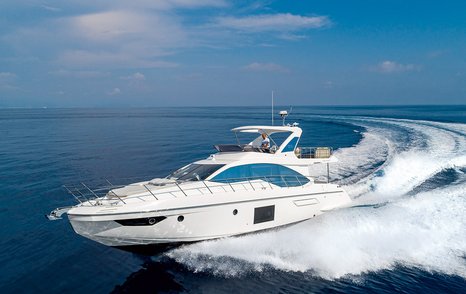
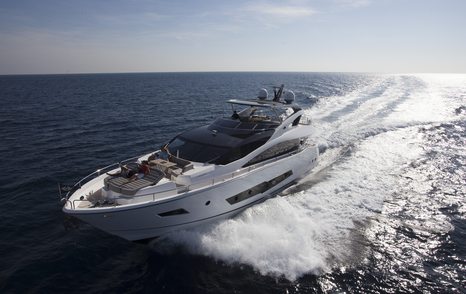
Hardtops
A more recent innovation for yachts of approximately 15m (50ft) and up is the hardtop, a solid GRP overhead section, often incorporating a sunroof, that shades a section of the flybridge and makes adding canopy sections far easier.
Alternatively, you can choose to totally protect the flybridge, with some builders offering an enclosed design. This might sound ideal for colder regions but is actually more popular in hotter climates, enabling the bridge area to be air-conditioned.
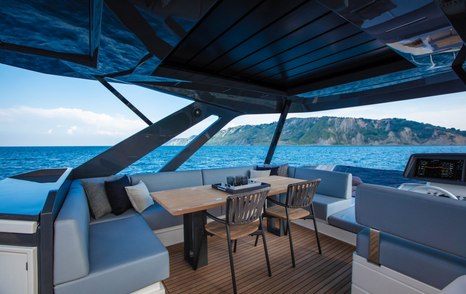

Safety by Design
Whilst flybridge access up from the cockpit is usually excellent, the design of the flybridge itself can deliver very different levels of perceived safety and enclosure.
On yachts below 20m (66ft), you may well find the flybridge perimeter marked by low-level coamings or guardrails, sometimes not much higher than the seat bases. This can create a sense of being on (rather than being in) the yacht, creating a feeling of exposure. Of course, there is a very good stylistic reason for these low-level designs, as they keep the overall air draft down and create a sleek exterior look.
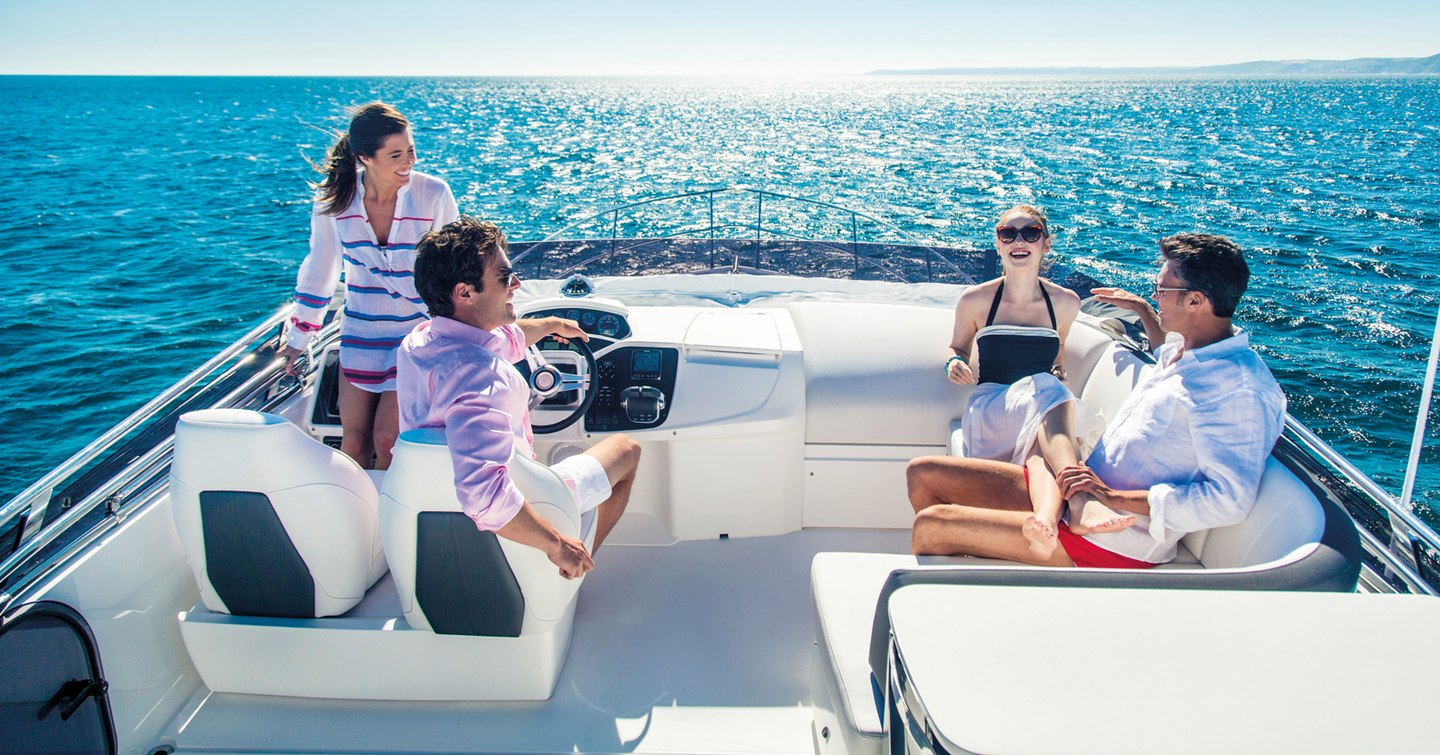
The best flybridge yachts, however, manage to create a sense of safety and enclosure while still delivering sleek flowing exterior lines. Even at the entry-level 12m (39ft) mark, you should be able to enjoy that sense of being in the yacht, with taller, knee-height coamings topped by well-placed grab rails. Furthermore, the flybridge access route should also be surrounded by tall stanchion posts to provide a secure boundary and hand-holds.
Performance
Most modern flybridge yachts will feature twin engines and a fast planing hull design, offering a top speed of approximately 30 knots. To reach these speeds, the extra weight of the flybridge requires flatter mid and aft hull sections to create the lift required to move the yacht onto the plane to deliver higher speeds.
At the same time, a flybridge yacht’s extra height moves its center of gravity up, creating greater motion. By comparison, lighter sports yacht or boat models with a lower center of gravity can create lift with finer or sharper underwater sections and as a result, are smoother at speed.
These design characteristics mean that whilst a flybridge yacht can hit high speeds, its ride quality can be reduced in rougher weather. No matter, a flybridge yacht is designed for cruising and that is what it does best, running comfortably at 18-25 knots in moderate sea conditions.
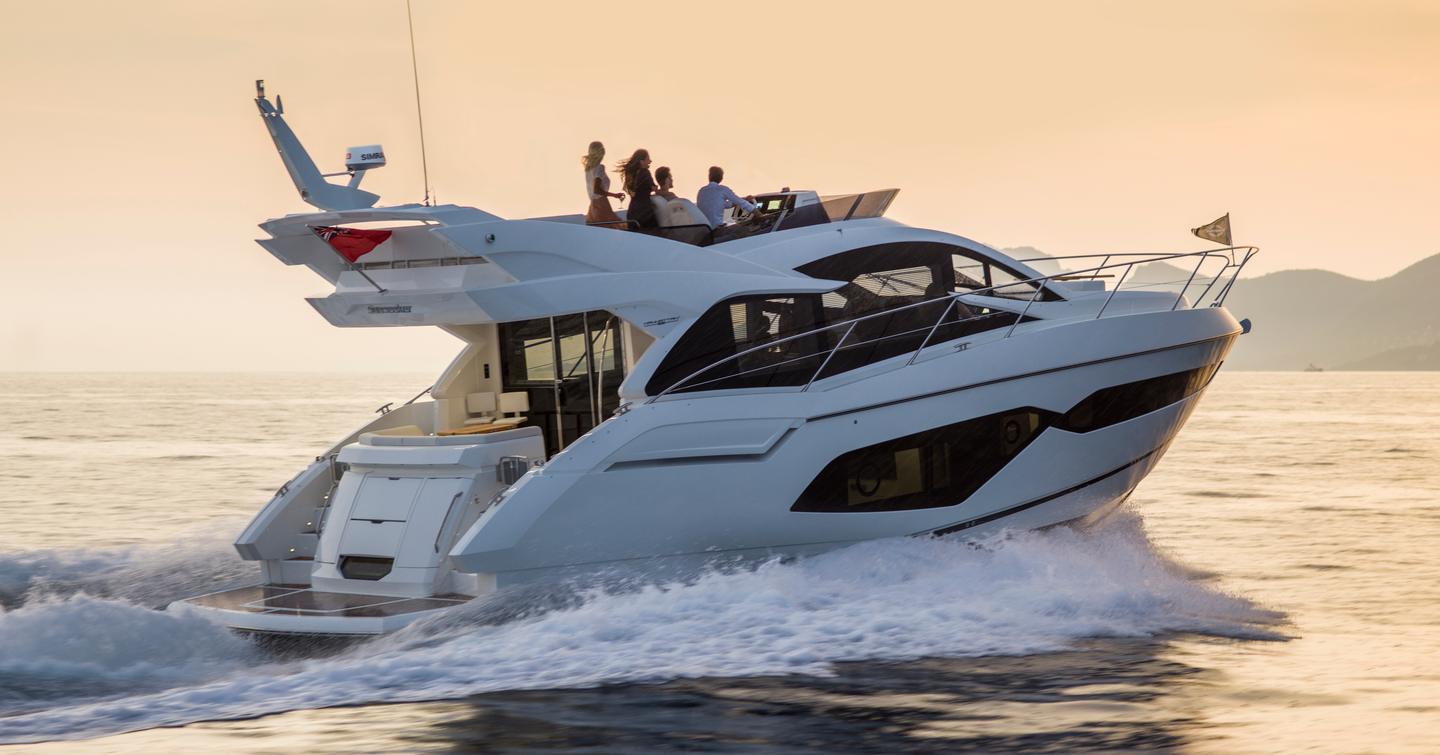
The extra height of the flybridge also means that this yacht type carries extra windage — the area above the waterline subject to pressure from the wind. As such, a flybridge can be affected more by wind, especially at slow speeds. To counter this, most flybridge yachts feature shaftdrive propulsion with rudder steering. The central or amidship location of the engines in this configuration creates a more neutral balance for the yacht (helping to lower its center of gravity too), while the rudders and shafts provide improved grip in the water and excellent slow-speed maneuverability.
Some recent flybridge designs have moved from shaft to pod drives. This configuration sees the engines moved aft, increasing the space available for interior accommodation. The pod drives also offer joystick control, making slow-speed handling both intuitive and directional.
If this vessel type sounds like it 'floats your boat', then why not check out our Flybridge Yachts for sale page?
Technical Summary
- Hull design - Fast planing, deep/modified vee or semi-displacement
- Propulsion - twin shaft or pod drives
- Performance - Cruising 20-25 knots
- Top speed - 30 knots
